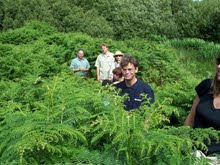HAMLET FINAL REVIEW:
1) Define dramatic foil
2) The following characters are dramatic foils for Hamlet. Discuss in detail how?
a) Claudius
b) Gertrude
c) Laertes
d) Ophelia
e) Polonius
f) Fortinbras
3) What do Fortinbras, Hamlet and Laertes have in common?
4) Define the following: soliloquy, monologue, implied metaphor, direct metaphor, extended metaphor
5) Be able to give at least three examples of – implied metaphors, direct metaphors, extended metaphors and discuss what is being compared
6) Be able to give three examples of symbols and discuss how they work in Hamlet.
7) Be able to give at least three examples of allusions.
8) Give the four elements of a sonnet
9) Give a description (mental, physical, emotional) of the following characters:
Ghost:
Hamlet:
Gertrude:
Claudius:
Ophelia:
Laertes:
Polonius:
Reynaldo:
Horatio:
Rosencrantz:
Guildenstern:
Osric:
Fransico:
Barnado:
Marcellus:
Fortinbras:
Gravedigger:
10) Outline the plot according to Exposition, Inciting Event, Rising Action, Climax, Falling Action and Resolution. Make sure you know where events fall.
11) Be able to summarize the following acts in vast detail:
ACT I:
ACT II:
ACT III:
ACT IV:
ACT V:
12) How is Polonius a meddling old fool? Think about how he buts in between Ophelia and Hamlet, How he sends Reynaldo to spy on his son Laertes, How he suggests spying on Hamlet three different times.
13) Do you think Ophelia loved Hamlet? Prove this with examples from the play.
14) In Act II what does Hamlet ask the players to recite? How does the allusion mimic Hamlet’s position?
15) What is a fishmonger? Who are fishmongers in the play? Why? Who are fishmongers in the senior class.
16) Who is Jephthah?
17) Explain the quote: “There is nothing either good or bad, but thinking makes it so.”
18) How is Hamlet rude to Ophelia? How is Ophelias rude to Hamlet?
19) What are some of the instructions Hamlet gives to the actors?
20) How is the “play within a play” scene a turning point in the story?
21) What are three important things about Claudius’ soliloquy?
22) What proof is there that Hamlet actually goes crazy in Act 3?
23) What is one thing Hamlet says that women do to men?
24) Discuss the meaning of the following soliloquys: ACT I SCENE ii lines 129-159
ACT III Scene 1 lines 57-91
ACT IV Scene iv lines 34-68
25) What characters are in the opening scene?
26) Describe Hamlet’s appearance in Act 1.
27) Why does Claudius need to justify him marriage in Act 1.
28) What is the continuous pun on sun? Discuss how Shakespeare and Hamlet are using it. Give some examples of its use.
29) How does Ophelia’s craziness in Act 4 reflect Hamlet’s in Act 2 and 3? How does it differ?
30) Why does Ophelia sing songs of sexual betrayal and death? What does it say about her character.
31) Why does Ophelia die? Do you think her death was accidental or suicide? Why?
32) What is the point of the gravedigger’s riddles and songs? How is the gravedigger a bit like Hamlet?
33) What is Osric’s role in the play. What concerns, Shakespeare’s concerns, does he reinforce.
34) Why does Hamlet ‘defy augury’?
35) How does the dying lines of Gertrude, Claudius and Laertes reflect the way their character has been presented throughout the play?
36) Who wins in Hamlet? Why?
37) What is the most disturbing element in Hamlet?
38) How does Hamlet reflect contemporary times?
39) What is odd about the following quote: “A bloody deed; almost as bad, good mother, as kill a king and marry with his brother.”
40) What is disturbing about the following: “Nay, but to live in the rank sweat of an enseamed bed; stewed in corruption; honeying, and making love over the nasty sty.”
41) What is one statement about Humanity that Hamlet makes.
42) What is important about the Pirates?
43) How does Hamlet change in Act 5?
44) Do you think Hamlet forsees his own end? Why do you think this?
45) How is Hamlet like Christ?
46) What is the purpose of Horatio?
47) What does the following quote mean:
“Alexander died, Alexander was buried/ Alexander returneth to dust; / dust is earth; of earth we make loam; and why of that loam whereto/ he was converted might they not stop a beer barrel?/ Imperious Caesar, dead and turned to clay,?/ Might stop a hole to keep the wind away.? O, that that earth which kept the world in awe/ Should patch a wall t’ expel the winter’s flaw.”
48) Quotations from all Acts from various individuals. Be able to state who is speaking, who they are speaking to, and what they are talking about. Look over quizzes and reread important acts.
51) Describe how Hamlet changes (moods and/or temperament) in every act
52) Essay question
